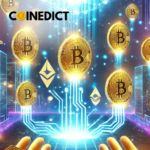
Bitcoin Spot ETFs See $438M Net Outflows Amid $573M Crypto Liquidations on November 25
The cryptocurrency market experienced a turbulent day on November 25, with Bitcoin spot exchange-traded funds (ETFs) witnessing net outflows of $438 million. This decline comes amid a broader market downturn, marked by $573 million in liquidations across the crypto space, highlighting the volatility that continues to dominate digital assets. Bitcoin Spot ETFs: A Challenging Day The $438 million net outflow from Bitcoin spot ETFs signals a shift in investor sentiment, possibly driven by short-term profit-taking or broader market uncertainty. Spot ETFs, which allow investors to gain direct exposure to Bitcoin without holding the asset, have gained popularity as a convenient and regulated avenue for crypto investment. However, significant outflows suggest that some investors are reducing exposure amidst the recent market turbulence. This trend reflects the ongoing challenges faced by Bitcoin ETFs, which are closely tied to market sentiment and trading activity. The net outflows may also indicate concerns over macroeconomic conditions or regulatory developments that could impact the crypto market. Crypto Market Liquidations: $573M Wiped Out The $573 million in liquidations across the cryptocurrency market underscores the volatility that continues to characterize digital assets. Liquidations occur when leveraged positions are forcibly closed due to significant price movements, often amplifying market declines. The liquidations were widespread, affecting both long and short positions, with Bitcoin and Ethereum accounting for the majority of the losses. These events highlight the risks associated with high leverage in crypto trading, as sudden price swings can trigger cascading sell-offs and exacerbate market volatility. Potential Drivers Behind the Decline Several factors may have contributed to the day’s market downturn: What’s Next for Bitcoin and the Crypto Market? Despite the short-term challenges, analysts remain cautiously optimistic about Bitcoin’s long-term prospects. The recent outflows and liquidations reflect the inherent volatility of cryptocurrencies, but they also present opportunities for strategic investors to capitalize on market dips. For Bitcoin spot ETFs, the recent outflows could prompt issuers to reassess strategies and investor outreach efforts. As the market matures, the role of ETFs in providing regulated exposure to cryptocurrencies will likely continue to grow. Meanwhile, the broader market’s ability to recover will depend on several factors: Conclusion The $438 million net outflow from Bitcoin spot ETFs and the $573 million in crypto market liquidations on November 25 underscore the volatility and complexities of the cryptocurrency space. While short-term challenges persist, the long-term trajectory of digital assets remains promising, driven by innovation, adoption, and increasing integration into the global financial system. For investors, navigating these turbulent waters requires a balanced approach, leveraging both caution and opportunity to adapt to the evolving landscape of digital finance.

















